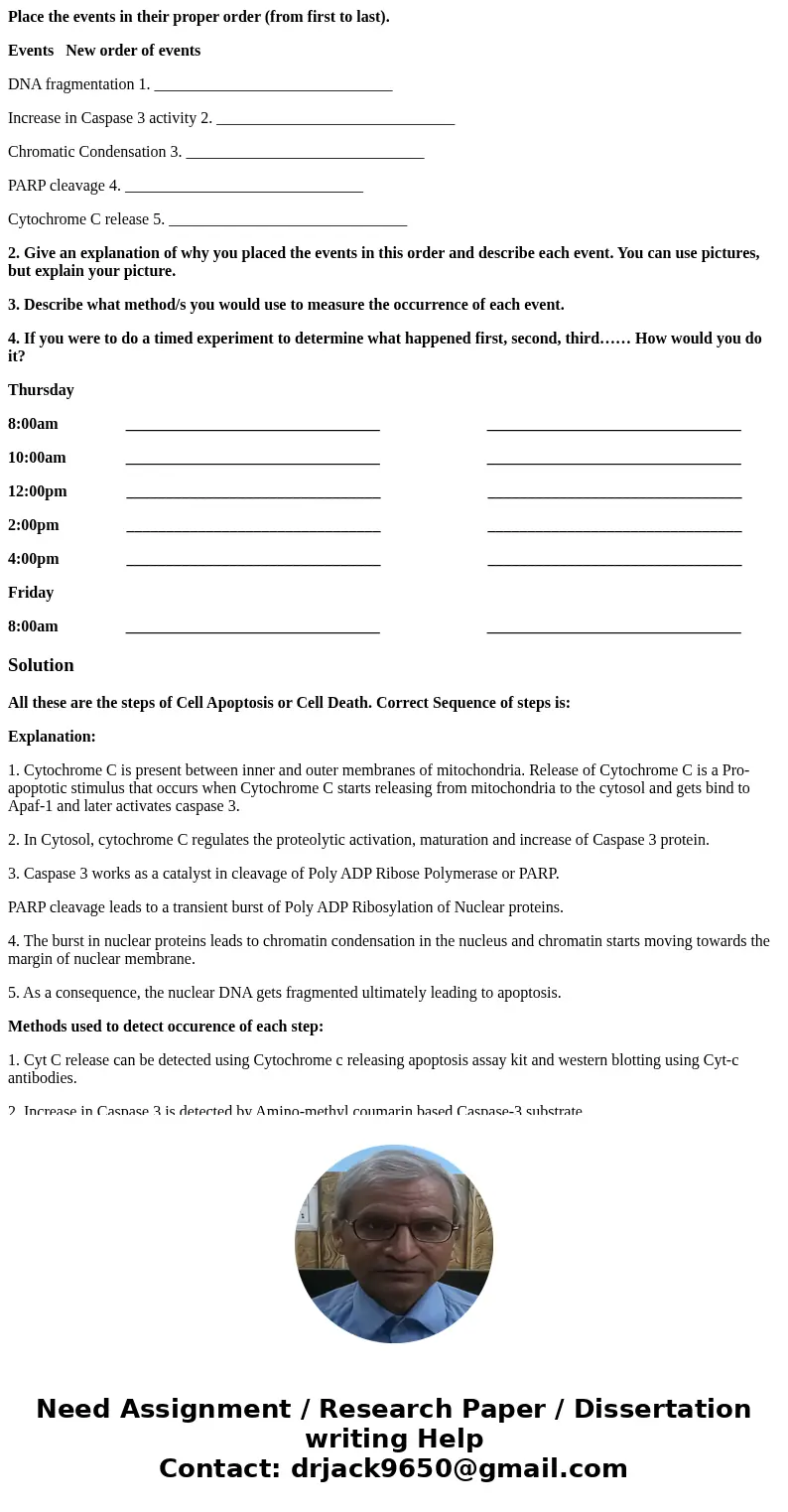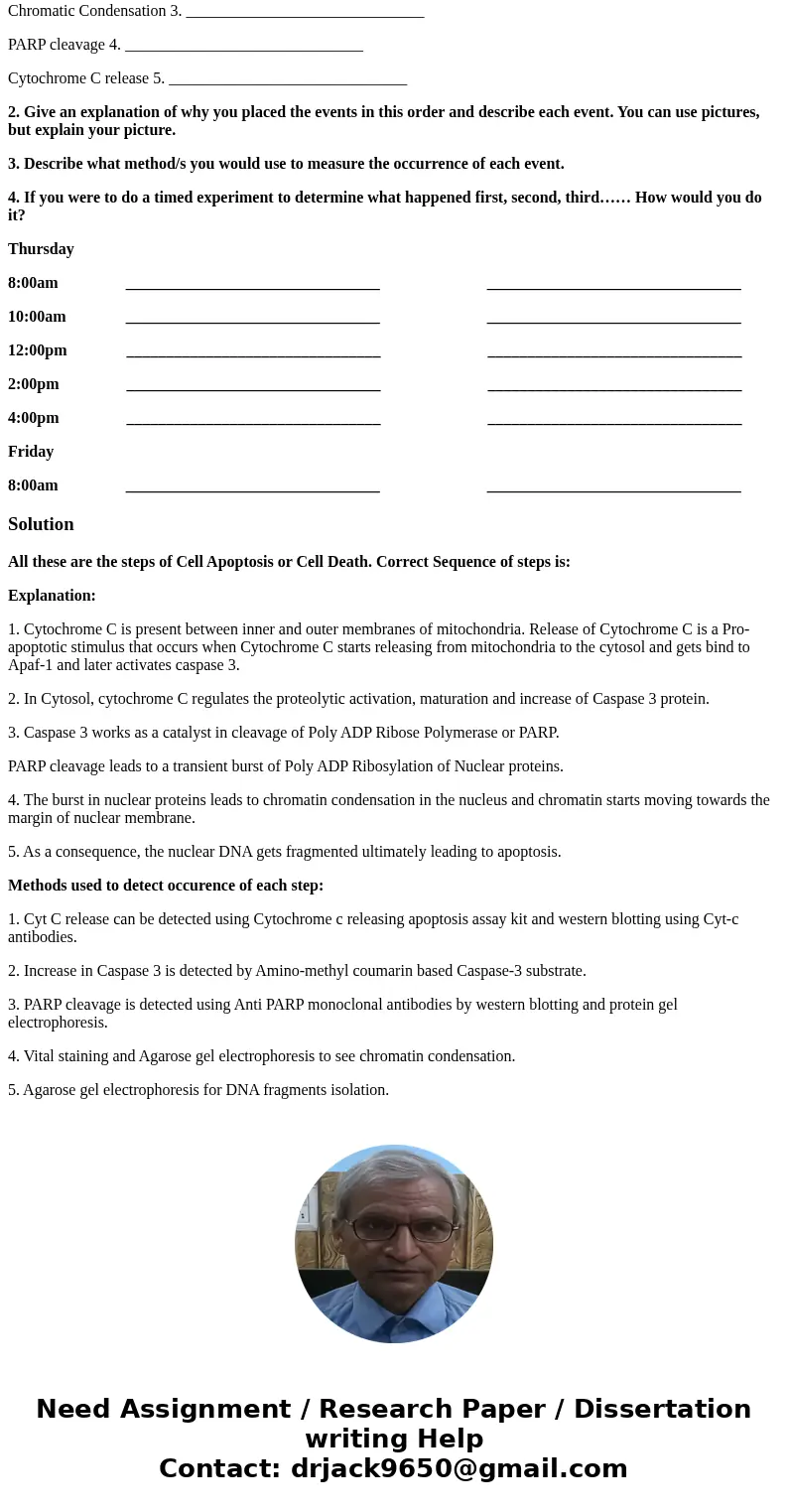Place the events in their proper order from first to last Ev
Place the events in their proper order (from first to last).
Events New order of events
DNA fragmentation 1. ______________________________
Increase in Caspase 3 activity 2. ______________________________
Chromatic Condensation 3. ______________________________
PARP cleavage 4. ______________________________
Cytochrome C release 5. ______________________________
2. Give an explanation of why you placed the events in this order and describe each event. You can use pictures, but explain your picture.
3. Describe what method/s you would use to measure the occurrence of each event.
4. If you were to do a timed experiment to determine what happened first, second, third…… How would you do it?
Thursday
8:00am ________________________________ ________________________________
10:00am ________________________________ ________________________________
12:00pm ________________________________ ________________________________
2:00pm ________________________________ ________________________________
4:00pm ________________________________ ________________________________
Friday
8:00am ________________________________ ________________________________
Solution
All these are the steps of Cell Apoptosis or Cell Death. Correct Sequence of steps is:
Explanation:
1. Cytochrome C is present between inner and outer membranes of mitochondria. Release of Cytochrome C is a Pro-apoptotic stimulus that occurs when Cytochrome C starts releasing from mitochondria to the cytosol and gets bind to Apaf-1 and later activates caspase 3.
2. In Cytosol, cytochrome C regulates the proteolytic activation, maturation and increase of Caspase 3 protein.
3. Caspase 3 works as a catalyst in cleavage of Poly ADP Ribose Polymerase or PARP.
PARP cleavage leads to a transient burst of Poly ADP Ribosylation of Nuclear proteins.
4. The burst in nuclear proteins leads to chromatin condensation in the nucleus and chromatin starts moving towards the margin of nuclear membrane.
5. As a consequence, the nuclear DNA gets fragmented ultimately leading to apoptosis.
Methods used to detect occurence of each step:
1. Cyt C release can be detected using Cytochrome c releasing apoptosis assay kit and western blotting using Cyt-c antibodies.
2. Increase in Caspase 3 is detected by Amino-methyl coumarin based Caspase-3 substrate.
3. PARP cleavage is detected using Anti PARP monoclonal antibodies by western blotting and protein gel electrophoresis.
4. Vital staining and Agarose gel electrophoresis to see chromatin condensation.
5. Agarose gel electrophoresis for DNA fragments isolation.


 Homework Sourse
Homework Sourse